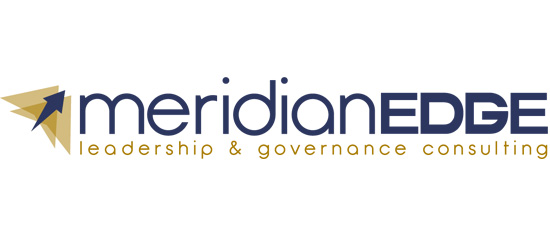|
Accountability Chain
|
The sequence of accountability that runs from staff, to chief executive, to Board, to owners.
|
|
Any Reasonable Interpretation
|
The latitude given to a delegate by the Board to act in accordance with Board policy.
The Board gives this latitude subject to being satisfied that its delegate’s interpretation of each policy is reasonable. To satisfy the Board, the delegate must explain his or her interpretation of each policy in the form of an “operational definition” that provides:
- one or more measures or compliance standards which, taken together, the delegate believes can demonstrate that policy’s fulfillment
- the rationale for choosing those measures
- credible data demonstrating that the measures have been met.
A reasonable interpretation is one that the Board agrees would be likely to be considered reasonable by a prudent person in a similar situation.
|
|
Approval syndrome
|
When Boards approve staff generated documents without any whole-Board criteria.
|
|
Board-Executive Delegation Policies
|
That section of Board policy (one of four) that sets out to whom the Board is delegating executive authority and how that authority will be monitored.
|
|
CEO
|
The person – who may or may not be titled Chief Executive Officer - who is accountable to the Board for managing the operations of the organization. In Policy Governance® this is done by fulfilling the Board’s Ends policies within the Board’s Executive Limitations policies, both as reasonably interpreted. Governance is easier with a CEO, but Policy Governance does not require one.
|
|
CGO
|
The chief governance officer who is accountable to the Board for using any reasonable interpretation of its policies for itself – Governance Process and Board-Executive Delegation - so that the Board does its job as it said it would do. The CGO may chair or delegate the chairing function and may or may not be titled CGO or chair
|
|
Consent Agenda
|
See Required Approvals Agenda
|
|
Direct Board Inspection
|
One (of three) possible methodologies for policy monitoring. Using this method the Board, or a group or individual authorized by the Board, examine the evidence in order to provide assurance that the delegate’s interpretation of Board policy is reasonable and that there has been compliance.
|
|
Ends
|
That section of Board policy (one of four) that states the reason for an organization’s existence. Ends answer three questions: what benefits should the organization produce, for whom, and how much they are worth?
Below the broadest, most encompassing level of Ends policy, the answers to one or more of these questions may be further specified by the Board as long as other issues (i.e. means issues) are not introduced.
|
|
Encompassment
|
The act of ensuring that the Board’s policies are sufficiently comprehensive to cover the Board’s full accountability yet sufficiently concise to ensure that they can be monitored in a cost-effective manner. This is achieved by the Board creating policy at the broadest level first and only moving to a further level of specificity if required to rule out unacceptable interpretations of what the Board has already said.
|
|
Executive Limitations
|
That section of Board policy (one of four) that defines the boundaries of prudence and ethics within which the Board allows the CEO to make decisions about means, or how things are done. Limitations should not be used to prescribe methods the Board would choose if it were management’s consultant.
|
|
External Monitoring Report
|
One (of three) possible methodologies for policy monitoring. Using this method an outside, neutral party, examines the evidence in order to provide assurance that the delegate’s interpretation of Board policy is reasonable and that there has been compliance.
|
|
Governance
|
The process by which a small group of persons, acting as a group on behalf of an organization’s owners, cause that organization to achieve what it should and avoid what is unacceptable.
|
|
Governance Process
|
That section of Board policy (one of four) that sets out how the Board operates and behaves.
|
|
Internal Monitoring Report
|
One (of three) possible methodologies for policy monitoring. Using this method the Board relies upon the delegate him or herself to provide sufficient evidence to assure the Board that their interpretation of Board policy is reasonable and that there has been compliance.
|
|
Management
|
The process by which an organization achieves what it should and avoids what is unacceptable, as defined by the Board.
|
|
Means
|
All issues that are not Ends issues, are means issues. Means decisions include decisions on particular activities, programs, products, services and so on. The methods or ways in which the Ends are achieved are management means. The methods by which the Board does its own work are governance means.
|
|
Model of Governance
|
A model of governance is a framework within which to organize the thoughts, activities, structure and relationships of governing Boards. The term “model” is used in the scientific sense of being a representation of a set of components of a system, developed for understanding, analysis, and improvement of the process of governing.
|
|
Monitoring
|
The act of assuring compliance with Board policies by requiring and assessing regular reports that give evidenced assurance of compliance with explicit justified policy interpretations including specified performance standards.
|
|
Owners
|
Those persons from whom the Board derives its legal and/or moral authority and to whom the Board owes its ultimate allegiance. Other stakeholders – such as staff, clients, vendors, and funders, are only owners if they independently qualify as such. The Board has a duty to connect directly with owners in order to be accountable to them and to inform its policy development. The organization’s duty to other stakeholders is governed by applicable Board policy.
|
|
Ownership Linkage
|
A deliberately created program of Board dialogue and deliberation with owners to inform Board policy development – with particular emphasis on Ends policies.
|
|
Perpetual Agenda
|
An agenda that continually focuses the Board on its unique contributions: (1) linkage with ownership, (2) explicit governing policies, and (3) assurance of executive performance.
|
|
Policy
|
A value or perspective that underlies action, expressed and formatted in line with Policy Governance principles.
|
|
Policy Circle
|
The teaching illustration typically used to show the four policy categories – Ends, Executive Limitations, Governance Process and Board-Executive Delegation.
|
|
Policy Governance® Academy
|
A week-long “Policy Governance Academy” personal training program with John and Miriam Carver. Entrance to the Academy is based upon evidence of significant experience with Boards and knowledge of Policy Governance. Academies are currently run in the USA and the UK.
|
|
Policy Governance® Model
|
The Policy Governance model is a practical approach for enabling Board members to ensure organizational performance that reflects owners’ best interests.
As such, the model provides an internally consistent framework of principles and practices for the efficient and effective organization of any Board’s thoughts, activities, structure and relationships.
|
|
Proscriptive Language
|
Used to for writing Executive Limitations policies in order to remind the Board and executive of the Board’s standing instruction that, in pursuit of Ends, everything is permitted unless it is forbidden.
|
|
Required Approvals Agenda (Consent Agenda)
|
A special section of the overall Board agenda for any matter or document that the Board determines it must formally approve (usually because of an external body’s requirement) but which is otherwise in the CEO’s domain. The Board treats these items as approvable as long as the CEO provides sufficient evidence of compliance with all relevant Board policy.
If concerns are raised the Board may decide to move the item onto the overall agenda in order to determine whether it is the interpretation or the data that causes it concern.
|
|
Service Mark
|
To ensure that the core principles and practices of the model are clearly and consistently described for their most effective application, the model’s creator, John Carver has registered the term Policy Governance as a service mark.
Ownership of the service mark is not used to restrict access to the model. Occasional updates are made where judged helpful in this respect.
|



